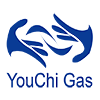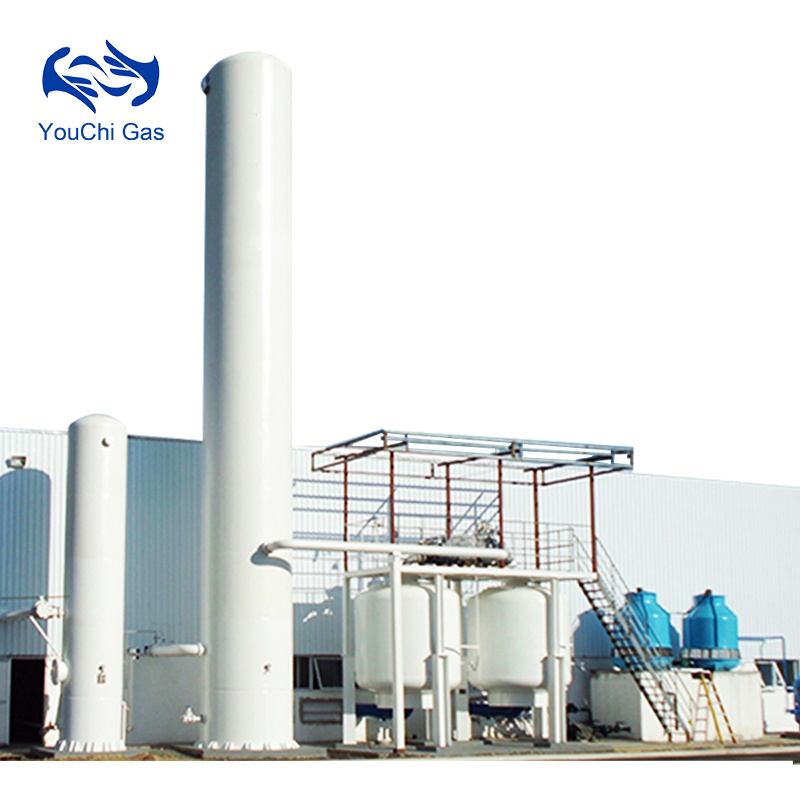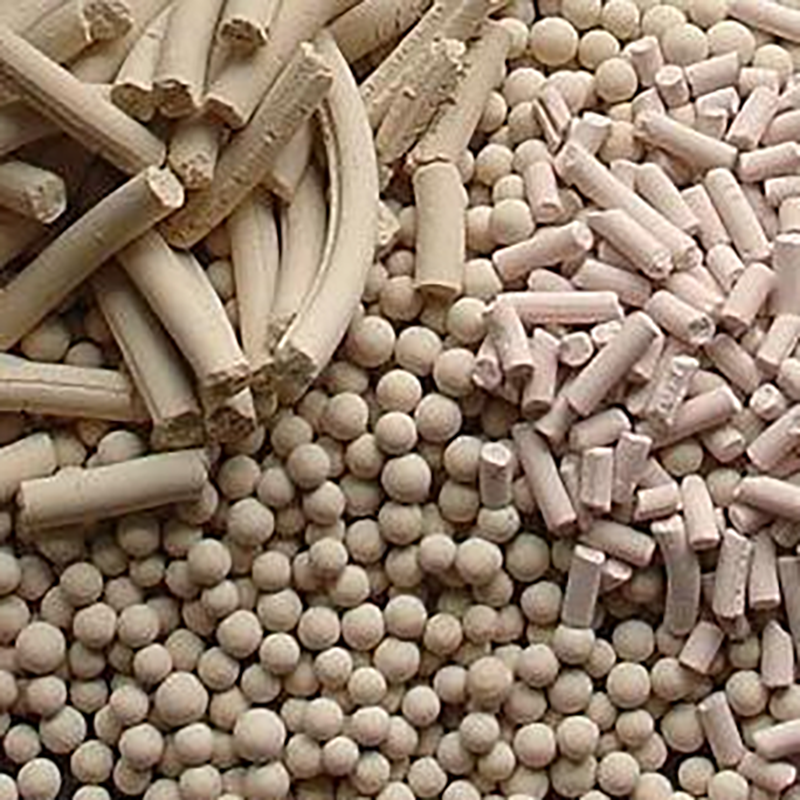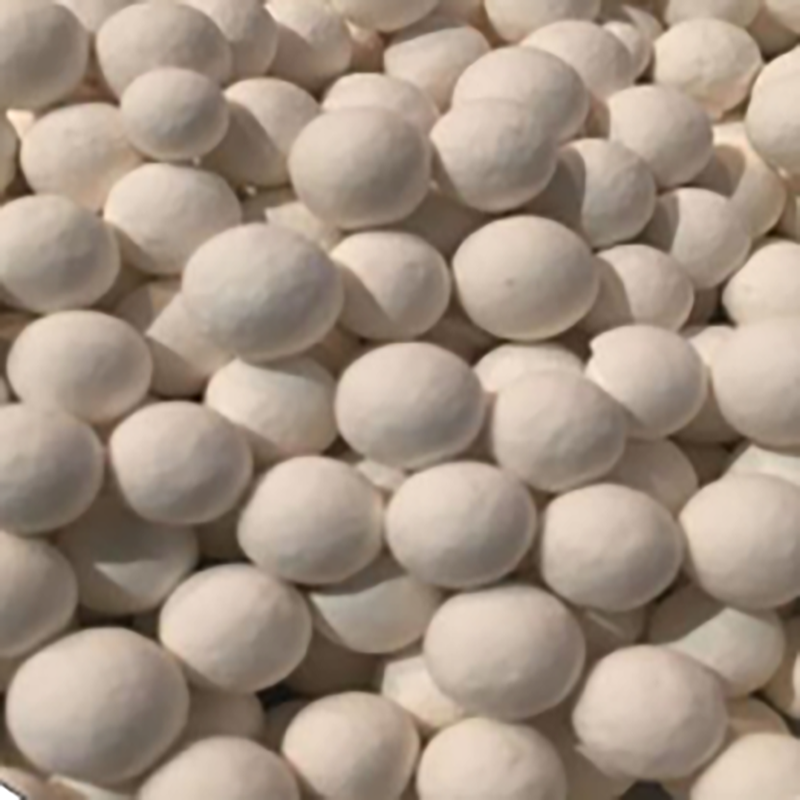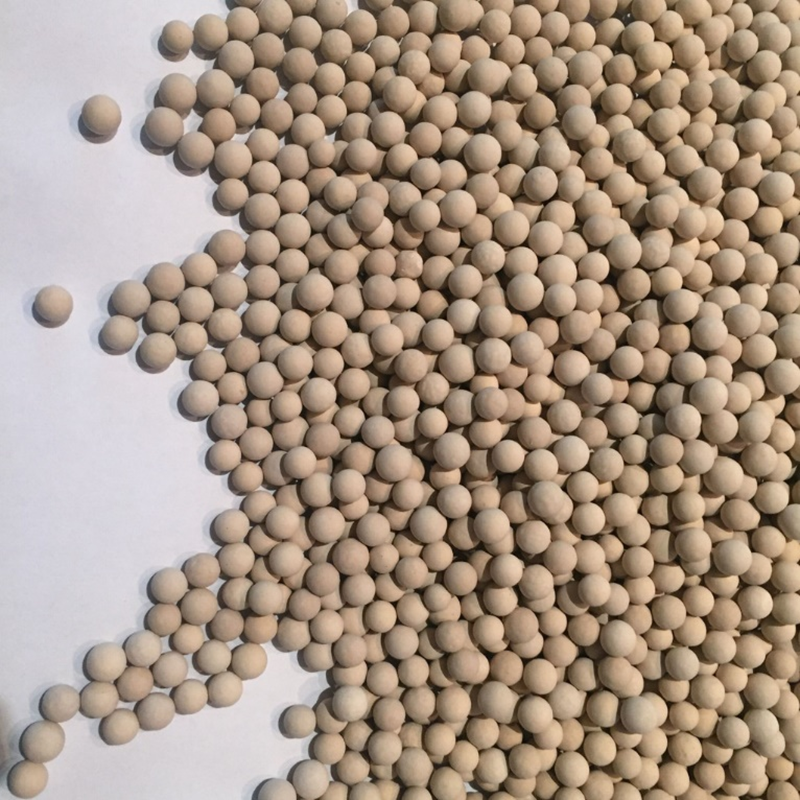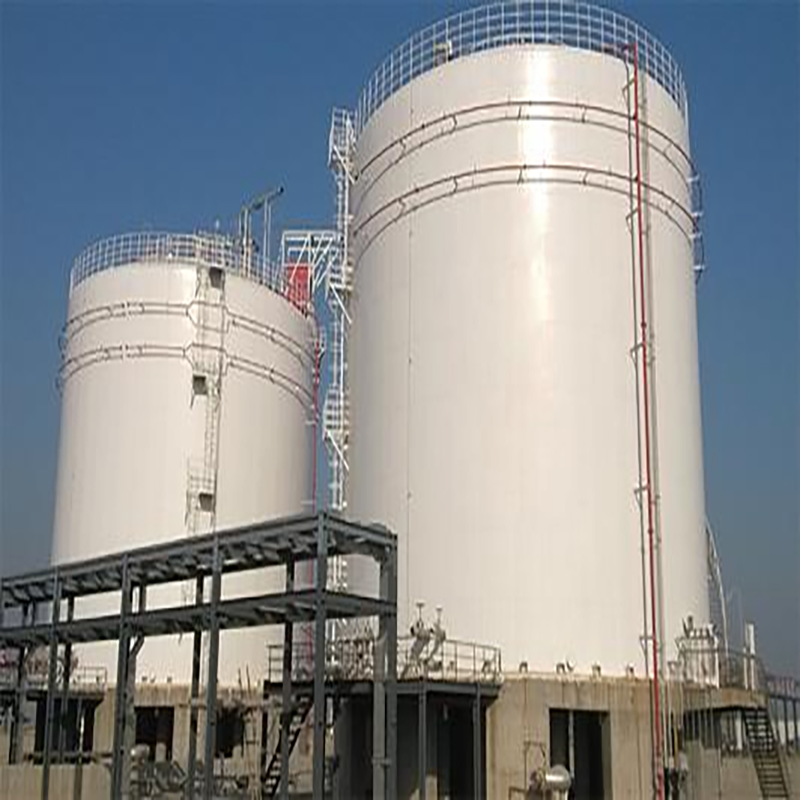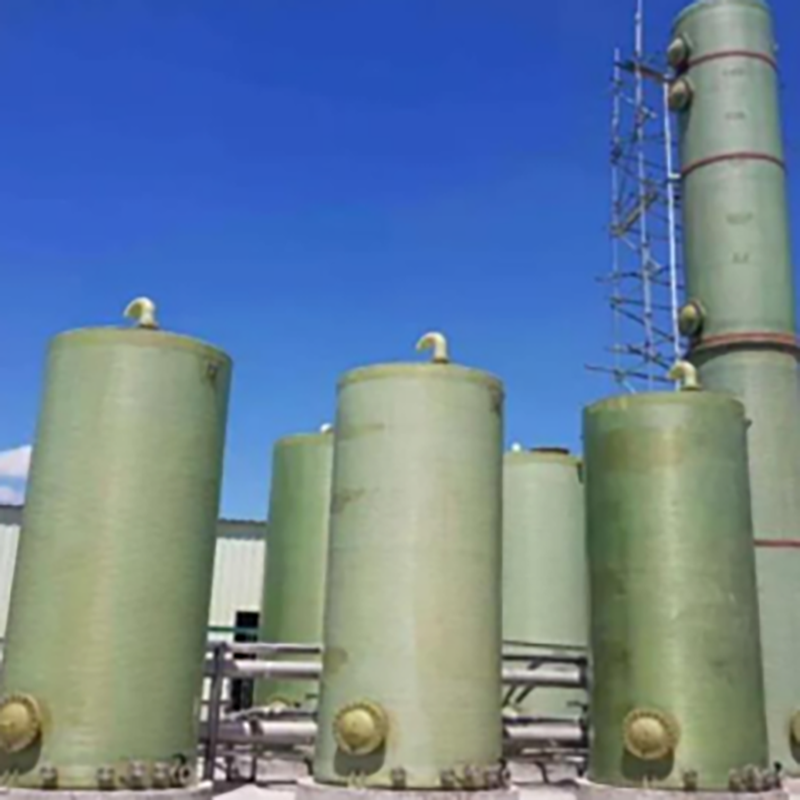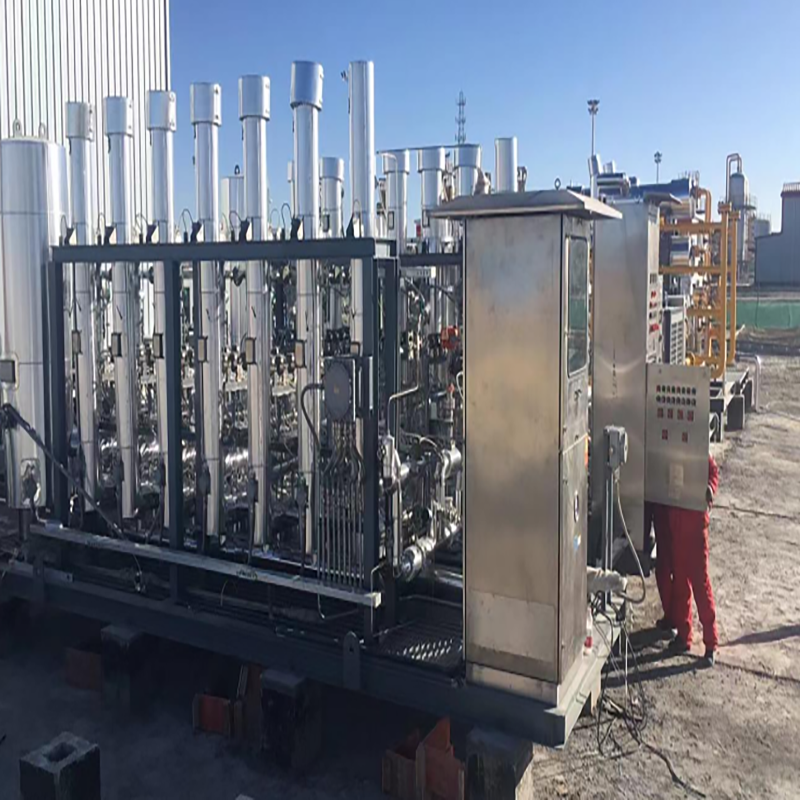PRODUCT CENTER
VPSA Oxygen Plants
Features:
Our cutting-edge Vacuum Pressure Swing Adsorption (VPSA) Oxygen Plants offer a highly efficient and reliable solution for on-site oxygen generation. Leveraging advanced VPSA technology, these plants operate on a unique working principle that ensures optimal performance and consistent output of high-purity oxygen.
The process begins with feed air being drawn through a series of filters to remove any dust particles before being boosted to a pressure range of 0.3~0.5 barg by a roots blower. This pre-treated air then enters an absorber vessel filled with carefully selected adsorbent materials.
Inside the absorber, the air first passes through a bed of activated aluminum at the bottom, which effectively eliminates moisture, CO2, and other unwanted gases. As the air continues to flow upwards, it encounters a layer of zeolite molecular sieve, where nitrogen molecules are selectively adsorbed, leaving behind a concentrated stream of oxygen and argon.
The oxygen-rich product gas, containing argon, is collected at the top of the absorber and directed into an oxygen buffer tank. To meet the specific pressure requirements of the consumption point, the oxygen is further compressed to a higher pressure using a dedicated oxygen compressor.
Our VPSA Oxygen Plants are designed with a focus on efficiency, reliability, and ease of operation. The combination of advanced adsorbent materials, optimized process parameters, and robust equipment ensures high oxygen purity, consistent output, and minimal downtime.
With their modular design and scalable capacity, our VPSA Oxygen Plants can be tailored to meet the specific needs of various industries, including healthcare, manufacturing, and research. Whether you require a small-scale oxygen generator or a large-scale production facility, our VPSA technology provides a cost-effective and dependable solution for your on-site oxygen requirements.
Product Details
When the adsorbents in the VPSA Oxygen Plant, supplied by China wholesale vpsa oxygen generation unit Supplier & Manufacturer, reach a saturation state, fully loaded with absorbed gases, the system initiates a regeneration process to restore their adsorption capacity. This process begins by depressurizing the saturated absorber to a negative micro-pressure, followed by further evacuation using a vacuum pump to achieve a pressure range of -0.5 to -0.8 barg.
During this regeneration phase, air from the other vpsa oxygen generation unit, along with a portion of the product gas, is introduced into the saturated absorber. This incoming gas stream helps to purge the absorbed water, CO2, and nitrogen from the adsorbent material, pushing these unwanted components out to the atmosphere. Through this process, the adsorbent in the vpsa oxygen generation unit is effectively regenerated and ready for the next adsorption cycle.
The VPSA Oxygen Plant operates with two absorbers working in alternating cycles, ensuring continuous oxygen production. While one absorber is in the adsorption phase, the other undergoes regeneration, and vice versa. This cyclic operation allows for uninterrupted oxygen supply and efficient utilization of the adsorbent material.
It is important to note that the working principle of VPSA (Vacuum Pressure Swing Adsorption) or VSA (Vacuum Swing Adsorption) oxygen generation plants is similar to that of PSA (Pressure Swing Adsorption) plants. Both technologies rely on the unique characteristics of adsorbent molecular sieves to selectively separate nitrogen from air, thereby concentrating the oxygen.
The key difference between VPSA and PSA lies in their operating pressure ranges. PSA plants operate with a pressurized adsorption phase (0.2 to 0.6 Mpa) and an atmospheric desorption phase. In contrast, VPSA plants have an adsorption phase that occurs at atmospheric pressure or slightly above (0 to 50 Kpa), followed by a vacuum desorption phase (-50 to -80 Kpa) facilitated by a vacuum pump.
The choice between VPSA and PSA technologies depends on various factors, including the desired oxygen purity, production capacity, energy efficiency, and specific application requirements. Our team of experts at China wholesale vpsa oxygen generation unit Supplier & Manufacturer can help you determine the most suitable technology for your oxygen generation needs, ensuring optimal performance, reliability, and cost-effectiveness.
COMMERCIAL APPLICATIONS:
• Glass cutting/processing/blowing
• Iron and steel
• Gold Mining
• Nonferrous metallurgy
• Chemical and petrochemical
• Burning process (glass craft, ampoule making)
• Papermaking
• Waste water treatment
MODELS:
| Model | Capacity (Nm3/h) | Oxygen purity | Delivery pressure |
|---|---|---|---|
| YCOV-50 | 50 | 21%-95% | ≥5bar |
| YCOV-100 | 100 | 21%-95% | ≥5bar |
| YCOV-200 | 200 | 21%-95% | ≥5bar |
| YCOV-300 | 300 | 21%-95% | ≥5bar |
| YCOV-500 | 500 | 21%-95% | ≥5bar |
| YCOV-1000 | 1000 | 21%-95% | ≥5bar |
| YCOV-2000 | 2000 | 21%-95% | ≥5bar |
| YCOV-3000 | 3000 | 21%-95% | ≥5bar |
| YCOV-5000 | 5000 | 21%-95% | ≥5bar |
| YCOV-10000 | 10000 | 21%-95% | ≥5bar |
* Oxygen purities are adjustable.
*Delivery pressures are customized to lower or higher pressures by adding boosters.
ADVANTAGES:
-Super energy saving. Less average power consumption than other technology. (0.3-0.5kwh/Nm3)
10% less power consumption than general competitors under same conditions.
-Lower maintenance cost, compared to other methods.
-Safe, stable, reliable operation, with proven technology.
-Complete automatic control system. Remote control, unattended. More advanced lOT applications.
-Long lifetime up to 10-15 years.
-Have big capacity range up to 10,000Nm3/h.
-Low noise with less than 80dB(A).
-Many installations in relevant industries and applications.
-Professional services teams at your service.
